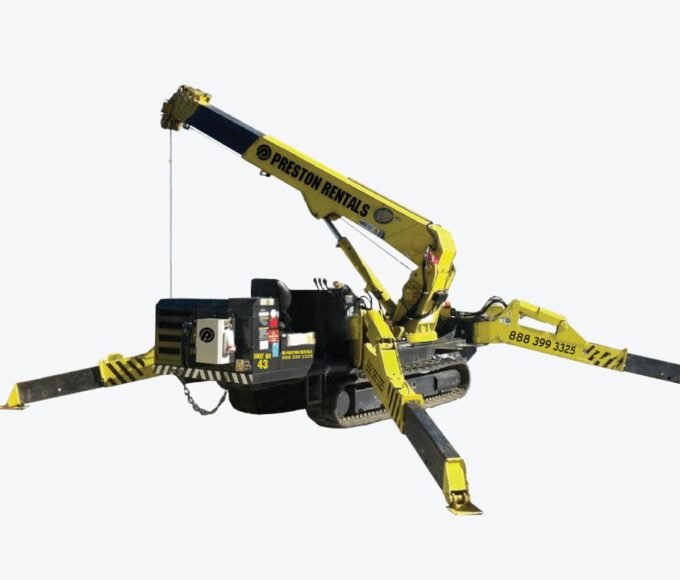In an era of technological advancements, robotics has emerged as a game-changer across various industries. One sector that’s experiencing significant transformation is electrical construction. From intricate wiring to complex installations, integrating robotics streamlines processes, enhances efficiency and paves the way for a more innovative approach to construction projects. This article explores how robotics can help automating electrical construction projects, revolutionizing traditional methods and ushering in a new era of productivity and precision.
The Rise of Robotics in Electrical Construction:
As demands for faster project completion and higher precision escalate, traditional electrical construction methods face limitations. This has prompted the integration of robotics into the construction workflow. Robotics offers unparalleled precision, speed, and safety, making it an indispensable tool for electrical contractors.
Automation: Simplifying Routine Tasks:
One key benefit of robotics in electrical construction is automation. Robots can undertake repetitive tasks with precision and consistency, reducing the likelihood of errors and enhancing overall project efficiency. Tasks such as cable laying, conduit installation, and panel assembly can now be automated, freeing human resources for more complex and creative endeavors.
Enhanced Safety Protocols:
Safety is paramount in the construction industry, and robotics is crucial in improving safety protocols. By assuming hazardous tasks, such as working at heights or in confined spaces, robots help mitigate risks to human workers. Additionally, robotic systems are equipped with advanced sensors and monitoring capabilities, allowing them to detect potential hazards in real-time and react accordingly, minimizing the likelihood of accidents.
Precision and Accuracy:
In electrical construction, precision is non-negotiable. Even minor errors can have significant ramifications, ranging from operational inefficiencies to safety hazards. Robotics excel in precision and accuracy, ensuring that every connection, wiring, and installation is executed flawlessly. This level of precision not only enhances the quality of the final output but also reduces the need for rework, ultimately saving time and resources.
Time and Cost Efficiency:
Time is money in the construction industry, and robotics offer a compelling solution to expedite project timelines while keeping costs in check. By accelerating mundane tasks and optimizing resource allocation, robots enable projects to be completed in shorter time frames without compromising quality. Additionally, long-term savings through increased productivity and reduced labor costs offset the upfront investment in robotics.
Adaptability to Complex Environments:
These projects often present challenges in terms of access, space constraints, and environmental conditions. Robots are designed to navigate and operate in diverse environments, whether it’s a crowded construction site or a confined space within a building. Their versatility and adaptability make them indispensable assets for tackling the complexities of modern construction projects.
Integration with Building Information Modeling:
Building Information Modeling (BIM) revolutionizes how construction projects are planned, designed, and executed. Robotics seamlessly integrate with BIM software, allowing for precise coordination between digital models and on-site construction activities. This integration facilitates better communication, coordination, and decision-making throughout the project lifecycle, improving outcomes and reducing conflicts.
Adaptability to Complex Environments:
These projects often present challenges in terms of access, space constraints, and environmental conditions. Robots are designed to steer and operate in diverse environments, whether it’s a crowded construction site or a confined space within a building. Their versatility and adaptability make them indispensable assets for tackling the complexities of modern construction projects.
Remote Operation and Monitoring:
With advancements in robotics technology, many systems now offer remote operation and monitoring capabilities. This means that tasks can be overseen and managed from a centralized location, enhancing project management efficiency and enabling real-time adjustments. Remote operation also minimizes the need for on-site personnel, reducing exposure to potential safety risks.
Skill Enhancement and Workforce Development:
While robotics automate many tasks in electrical construction, they also present opportunities for skill enhancement and workforce development. As robots handle routine and repetitive tasks, human workers can focus on more complex and value-added activities, such as system design, troubleshooting, and innovation. This shift in focus enhances job satisfaction and encourages continuous learning and upskilling, ensuring that the workforce remains agile and adaptable in the face of evolving technological trends.
Sustainability and Environmental Impact:
In addition to improving efficiency and safety, robotics in electrical construction also contributes to sustainability efforts. By optimizing resource utilization and minimizing waste, robots help reduce the environmental footprint of construction projects. Furthermore, using robotics can lead to energy savings through more precise installations and optimized operation of electrical systems, aligning with broader sustainability goals within the construction industry.
The integration of robotics can help in automating electrical construction projects, which heralds a new era of innovation, efficiency, and safety. By automating routine tasks, enhancing precision, and enabling seamless integration with digital technologies, robotics are reshaping the construction landscape. As contractors embrace these advancements, they not only unlock new growth opportunities but also elevate the industry’s standards of quality and safety.
















